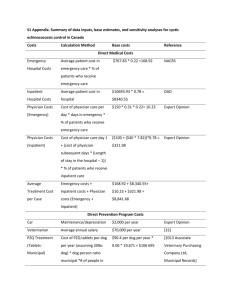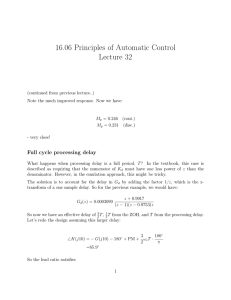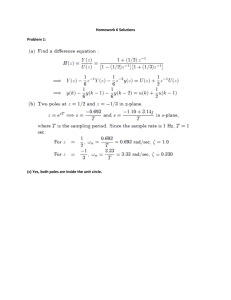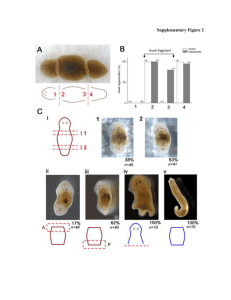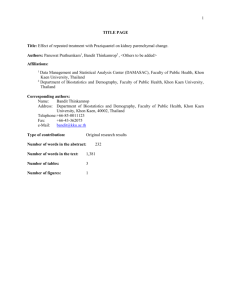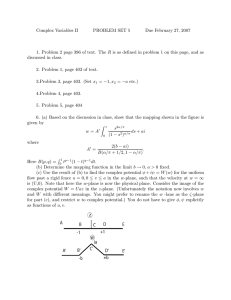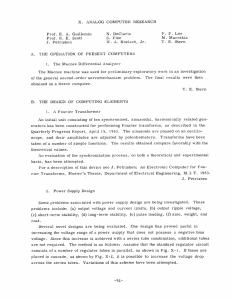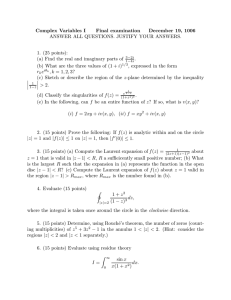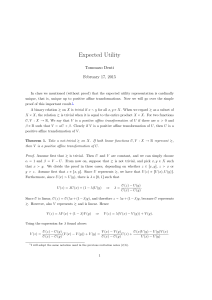Document 13352598
advertisement
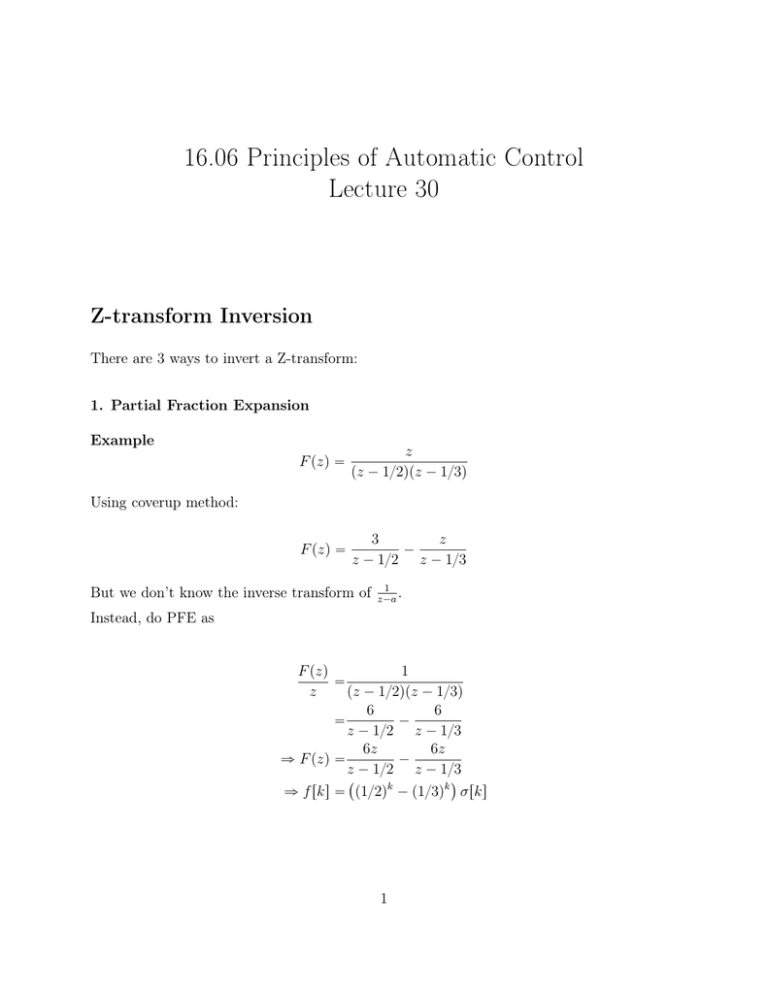
16.06 Principles of Automatic Control
Lecture 30
Z-transform Inversion
There are 3 ways to invert a Z-transform:
1. Partial Fraction Expansion
Example
F pzq “
z
pz ´ 1{2qpz ´ 1{3q
F pzq “
3
z
´
z ´ 1{2 z ´ 1{3
Using coverup method:
But we don’t know the inverse transform of
1
.
z´a
Instead, do PFE as
F pzq
1
“
z
pz ´ 1{2qpz ´ 1{3q
6
6
“
´
z ´ 1{2 z ´ 1{3
6z
6z
ñ F pzq “
´
z ´ 1{2 z ´ 1{3
`
˘
ñ f rks “ p1{2qk ´ p1{3qk σrks
1
2. Inverse transform integral
1
f rks “
2πj
¿
F pzqz k´1 dz
where the integral is counter-clockwise around the origin in the region of convergence. If the
integral is done using residues, this method reduces to method 1.
3. Long division
There is no analog to this in continuous time!1
By expanding F pzq in powers of 1{z, can obtain samples f rks directly.
Example:
F pzq “
z
1
“
z´a
1 ´ az
Do long division:
1 ´ az
´1
1 ` az ´1 1 ` a2 z ´2 ` ¨ ¨ ¨
|1
1 ´ az ´1
`az ´1
`az ´1 ´ a2 z ´2
`a2 z ´2
`a2 z ´2 ´ a3 z ´3
..
.
So f rks “ ak , k ě 0.
In practice, not very practical2 , but can be easily implemented to directly obtain, say, step
response.
Relationship between s and z.
Consider a continuous-time signal
f ptq “ σptqe´at
1
Actually, expanding F psq in powers of 1{s yields the infinite series (Taylor series) for f ptq, which isn’t
really that useful.
2
Not very practical for hand computation.
2
Its Laplace transform is
1
s`a
with pole at s “ ´a. The z-transform of the sampled signal f pkT q is
F psq “
F pzq “
z
z ´ e´et
with pole at z “ e´at . Therefore, there is a natural mapping
z “ est
between s-plane and the z-plane. For example, if we want a system to have natural frequency
ωn and damping ratio ζ, in the z-plane the poles should be at
z“e
¯
´
?
´ζωn `j 1´ζ 2 ωn T
3
Observations:
1. The stability boundary is |z| “ 1.
2. The region near s “ 0 maps to the region z “ 1. For reasonable sampling rates, this is
where all the action is.
3. The z-plane pole locations give response information normalized to the sample rate, not
to dimensional time as in s-plane. So the meaning of, say, z “ 0.9 depends on the
sampling rate.
4. z “ ´1 corresponds to ω “ ωs {2, where ωs “ 2π{T “sample rate in radians/sec. ωs {2 is
the Nyquist frequency.
4
5. Vertical lines in s-plane (constant ζωn ) correspond to circles centered at z “ 0 in z-plane.
6. Horizontal lines in s-plane (constant ωd ) correspond to radial lines from z “ 0 in z-plane.
7. Frequency greater than ωs {2 overlap lower frequencies in the z-plane. This is called
aliasing. So should sample at least twice as fast as highest frequency component in
Gpsq and rptq.
Design by Emulation
Can either design directly using, say, root locus in z-plane, or can design in continuous time,
and discretize the continuous controller. Must then verify that the design works, of course.
The book suggests three methods:
1. Tustin’s approximation
2. Matched Pole-Zero Method (MPZ)
3. Modified MPZ
Will start with...
Tustin’s approximation
We have found that
z “ esT
We can approximate z by
z « 1 ` sT
or we can approximate z ´1 by
z ´1 “ e´sT « 1 ´ sT
ñ
z«
1
1 ´ sT
The more symmetric approximation
z «
1 ` sT {2
1 ´ sT {2
5
(1)
has some useful properties. Inverting, we have
s«
2 `z ´ 1˘
T z`1
(2)
Replacing every occurrence of s by the RHS of (2) in a given Kpsq is Tustin’s method, or the
bilinear transform. It results in a discrete controller, Kd pzq, that is a good approximation to
Kpsq.
Example: For the plant
Gpsq “
1
sps ` 1q
find a controller for the unity feedback, discrete-time system, with sample time T “ 0.025
sec (40 Hz sampling), with ωc “ 10 r/s, and PM “ 50˝ .
First, let’s design for the continuous system:
-1
-2
a
b
10
Need to add a lead compensator at crossover to get desired PM. Compensator is
Kpsq “ 42.16
1 ` s{4.2
1 ` s{24
then
Kd pzq “ K
` 2 z ´ 1˘
T z`1
3 ways to actually compute Kd pzq:
6
1. Actually do the substitution indicated above (ugh!)
2. Use the Matlab command
kd “ c2dpk, 0.025, 1 tustin1 q
3. Map the poles and zeros of Kpsq
7
MIT OpenCourseWare
http://ocw.mit.edu
16.06 Principles of Automatic Control
Fall 2012
For information about citing these materials or our Terms of Use, visit: http://ocw.mit.edu/terms.

